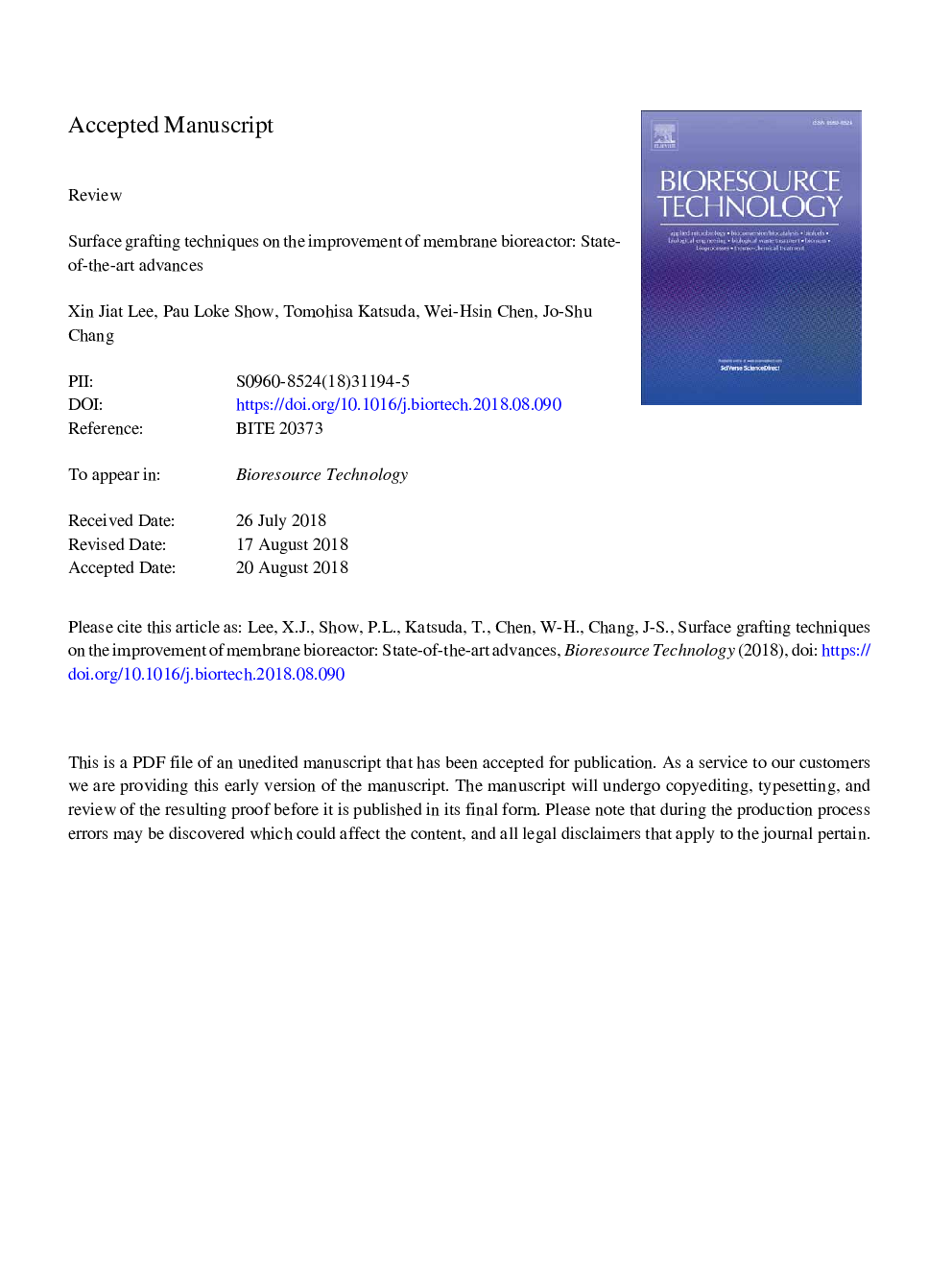| Article ID | Journal | Published Year | Pages | File Type |
|---|---|---|---|---|
| 11032416 | Bioresource Technology | 2018 | 48 Pages |
Abstract
Membrane bioreactor (MBR) is regarded as the state-of-the-art technology in separation processes. Surface modification techniques play a critical role in improving the conventional membrane system which is mostly hydrophobic in nature. The hydrophobic nature of membranes is known to cause fouling, resulting in high maintenance costs and shorter lifespan of MBR. Thus, surface grafting aims to improve the hydrophilicity of bio-based membrane systems. This review describes the major surface grafting techniques currently used in membranes, including photo induced grafting, plasma treatment and plasma induced grafting, radiation induced grafting, thermal induced grafting and ozone induced grafting. The advantages and disadvantages of each method is discussed along with their parametric studies. The potential applications of MBR are very promising, but some integral membrane properties could be a major challenge that hinders its wider reach. The fouling issue could be resolved with the surface grafting techniques to achieve better performance of MBRs.
Related Topics
Physical Sciences and Engineering
Chemical Engineering
Process Chemistry and Technology
Authors
Xin Jiat Lee, Pau Loke Show, Tomohisa Katsuda, Wei-Hsin Chen, Jo-Shu Chang,
